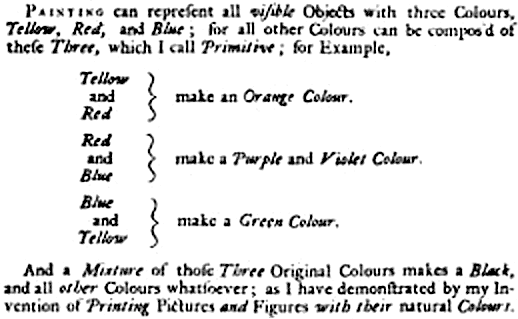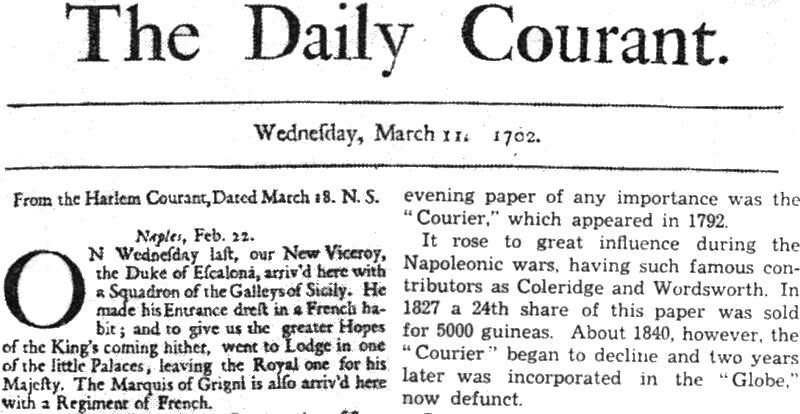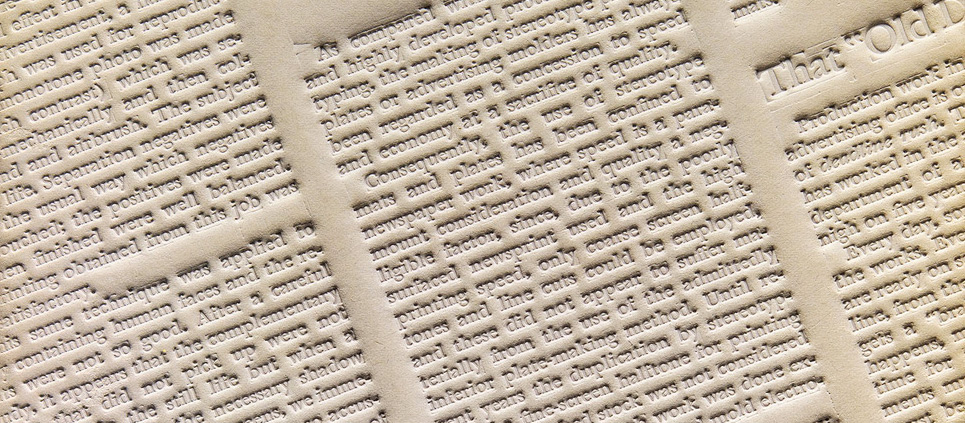During the eighteenth century, newspapers and magazines start appearing all over the world. The invention of the piston steam engine enables the creation of larger and faster printing presses. The volume of work that is printed increases enormously. It is estimated that 337,000 book titles are printed in the eighteenth century. Obviously, this also leads to many more people working in the industry. In 1725 there are 75 printers in London, but by 1785 there are 124. One short-lived trend of this era is the establishment of private presses, such as the printing office of Horace Walpole, the fourth duke of Orford, or that of the poet William Blake.
1702 – The first daily newspaper
The Daily Courant is the first British daily newspaper. The single-page two column newspaper only focusses on foreign news. It has advertisements on the reverse side and is published until 1735 when it merges with the Daily Gazetteer.
Around the same time the first local newspapers, such as The Norwich Post and The Worcester Post-Man, start to appear. They are initially published bi-weekly.
1704 – The Boston News-Letter
The Boston News-Letter is the first newspaper that is published on a continuous basis in British North America. It is subsidized and controlled by the British government and has only limited circulation.
1709 – First modern copyright legislation
The Statute of Anne is the first modern copyright law. It originates in the United Kingdom.
1710 – Color engravings
The German painter and engraver Jakob Christof Le Blon produces the first engraving in several colors. He uses the mezzotint method to engrave three metal plates. Each plate is inked with a different color, using red, yellow and blue. Later on, he adds a fourth plate, bearing black lines. This technique helped form the foundation for modern color printing. Le Bon’s work is based on Newton’s theory, published in 1702, which states that all colors in the spectrum are composed of the three primary colors blue, yellow and red.

1716 – Caslon Roman Old Face
William Caslon is an English typographer whose foundry operates in London for over 200 years. His Caslon Roman Old Face is cut between 1716 and 1728. The letters are modeled on Dutch types but they are more delicate and not as monotonous. Caslon’s typefaces remain popular, digital versions are still available today.
1721 – The New England Courant
The New England Courant is published by James Franklin, the older brother of Benjamin Franklin. The market for such newspapers is still very limited with press runs (the total number printed) of 300 or less.
1725 – Duplicating printing plates using stereotyping
The Scottish goldsmith William Ged invents stereotyping. In this process, a mixture of plaster is poured on a tray of completed type to make a mold from it. Hot metal is poured into this mold and allowed to set. The resulting stereotype or cliché is a printing plate that is an exact copy of the original. Ged fails to make a commercial success of his invention but it gets picked up again by others, such as Firmin Didot and Lord Stanhope. From 1848 onwards molds are created from papier-mâché instead of plaster. The image below shows such a paper stereotype. The stereotyping process makes larger press runs as well as reprints much cheaper. It is used extensively for printing books and newspapers until the late 1800s when it is gradually getting replaced by electrotyping which delivers sharper copies in which finer detail can be preserved.
1727 – Miniature bibles
In London, the Biblia or ‘a Practical Summary of ye Old & New Testaments’ is printed. This tiny 4 by 3-centimeter shortened version of the Bible is bound in leather with reliefs. It contains 284 pages with 14 wood engravings. Tiny books like this are popular collector’s items to this day.
1731 – The first magazine
The Gentleman’s Magazine, considered to be the first general-interest magazine, is published for the first time. Its editor, Edward Cave, is the first to use the term ‘magazine’. The publication runs uninterrupted until 1922.
1732 – Poor Richard’s Almanac
In the American colonies Benjamin Franklin, who had learned to print from his brother, establishes his own printing office and becomes the publisher of the Pennsylvania Gazette. Among his publications, Poor Richard’s Almanac, a yearly publication containing a calendar, weather, poems, sayings, and astronomical and astrological information, becomes the most famous. He sells the business again in 1748 to devote his time to his literary, journalistic, and civic activities. He does keep promoting the print industry in the colonies.
1742 – Magazines get illustrated
The Illustrated London News is the first magazine to make extensive use of illustrations. The issue below is from 1876, an era in which newly explored continents provided plenty of opportunities to come up with imaginative artwork.








I’m also working on a novel and wondering about the availability of paper and books in the average household before the French and American revolutions?
Faulkners Journal in Dublin is an important source for Handel /Messiah researchers. Do we know anything how long did it take weekly journals like Faulkner’s to get printed? were they set and print all in one night?
I have a copy of A Present for an Apprentice 1761 which is double printed: page 1, page 1, page 2, page 2 … and so on. ???
I’m working on a novel where my hero is a newspaper publisher in Boston leading up to the Revolution. Is there any source that can tell me what it would cost (in 18th century pounds) to set up a printing press or a print shop? I vaguely remember coming across something that suggested it might cost upwards of 4K pounds to set up a printing business. Can you help me figure out what might be realistic?
As far as I can tell, this is accurate, until the last entry. If magazines get illustrated in 1742, why show a newspaper from 1876? In fact, 20 or more engravings per year plus many smaller woodcuts appeared in several British magazines from the 1740s.
Thanks for the feedback. According to Wikipedia The Illustrated London News was a weekly news magazine. Of course weekly newspapers also exist, making the distinction a matter of how you define one or the other.